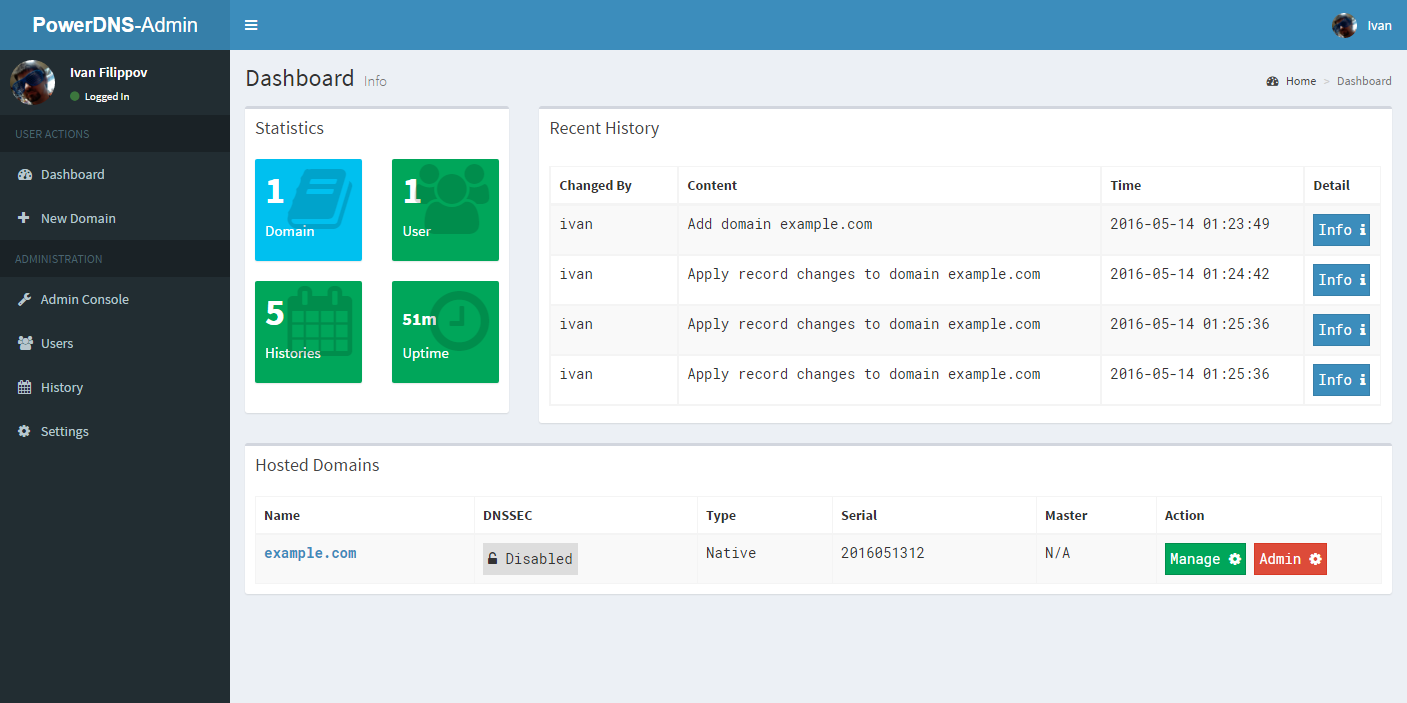PowerDNS-Admin
PowerDNS Web-GUI - Built by Flask
Features:
- Multiple domain management
- Local / LDAP user authentication
- Support Two-factor authentication (TOTP)
- User management
- User access management based on domain
- User activity logging
- Dashboard and pdns service statistics
Setup
PowerDNS Version Support:
PowerDNS-Admin supports PowerDNS autoritative server versions 3.4.2 and higher.
pdns Service
I assume that you have already installed powerdns service. Make sure that your /etc/pdns/pdns.conf has these contents
PowerDNS 4.0.0 and later
api=yes
api-key=your-powerdns-api-key
webserver=yes
PowerDNS before 4.0.0
experimental-json-interface=yes
experimental-api-key=your-powerdns-api-key
webserver=yes
This will enable API access in PowerDNS so PowerDNS-Admin can intergrate with PowerDNS.
Create Database
We will create a database which used by this web application. Please note that this database is difference from pdns database itself.
MariaDB [(none)]> CREATE DATABASE powerdnsadmin;
MariaDB [(none)]> GRANT ALL PRIVILEGES ON powerdnsadmin.* TO powerdnsadmin@'%' IDENTIFIED BY 'your-password';
PowerDNS-Admin
In this installation guide, I am using CentOS 7 and run my python stuffs with virtualenv. If you don't have it, lets install it:
$ sudo yum install python-pip
$ sudo pip install virtualenv
In your python web app directory, create a flask directory via virtualenv
$ virtualenv flask
Enable virtualenv and install python 3rd libraries
$ source ./flask/bin/activate
(flask)$ pip install -r requirements.txt
Web application configuration is stored in config.py file. Let's clone it from config_template.py file and then edit it
(flask)$ cp config_template.py config.py
(flask)$ vim config.py
Create database after having proper configs
(flask)% ./create_db.py
Run the application and enjoy!
(flask)$ ./run.py




